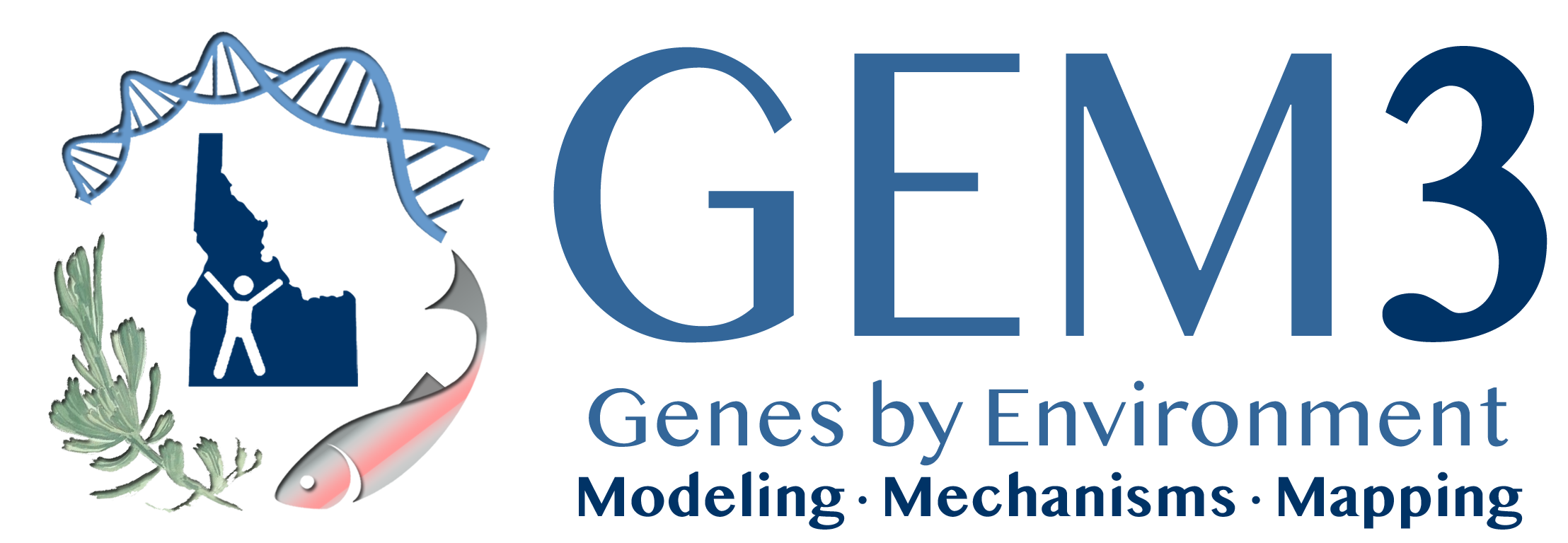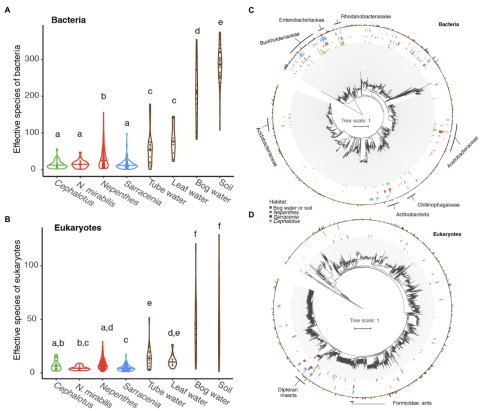The Albany pitcher plant, Cephalotus follicularis, has evolved cup-shaped leaves and a carnivorous habit completely independently from other lineages of pitcher plants. It is the only species in the family Cephalotaceae and is restricted to a small region of Western Australia. Here, we used metabarcoding to characterize the bacterial and eukaryotic communities living in C. follicularis pitchers at two different sites. Bacterial and eukaryotic communities were correlated in both richness and composition; however, the factors associated with richness were not the same across bacteria and eukaryotes, with bacterial richness differing with fluid color, and eukaryotic richness differing with the concentration of DNA extracted from the fluid, a measure roughly related to biomass. For turnover in composition, the variation in both bacterial and eukaryotic communities primarily differed with fluid acidity, fluid color, and sampling site. We compared C. follicularis-associated community diversity with that of Australian Nepenthes mirabilis, as well as a global comparison of Southeast Asian Nepenthes and North American Sarracenia. Our results showed similarity in richness with communities from other pitcher plants, and specific bacterial taxa shared among all three independent lineages of pitcher plants. Overall, we saw convergence in richness and particular clades colonizing pitcher plants around the world, suggesting that these highly specialized habitats select for certain numbers and types of inhabitants.
Global comparison of pitcher plant-associated communities. (A,B) Richness measured as effective number of species for Cephalotus follicularis bacteria (A) and eukaryotes (B) in comparison with Australian Nepenthes mirabilis, other Nepenthes, Sarracenia, and environmental communities. Different letters above the violin plots represent significant differences as measured by a pairwise Wilcoxon test, with Benjamini and Hochberg adjustment for multiple comparisons. (C,D) Phylogenetic trees of bacteria (C) and eukaryotes (D), comparing organisms from environmental samples (brown, outer ring) with those found in at least 10% of our Cephalotus follicularis (green, innermost ring), Nepenthes (red, second innermost ring) and Sarracenia (blue, second outermost ring) samples. Names of selected shared clades are listed.
| GEM3 author(s) | |
| Year published |
2022
|
| Journal |
Frontiers in Plant Science
|
| DOI/URL | |
| Keywords |
Ecology
Evolution
Genomics
Genotyping by Sequencing
Population Genetics
|
| GEM3 component |
Mechanisms
|
| Mentions grant |
Yes
|

